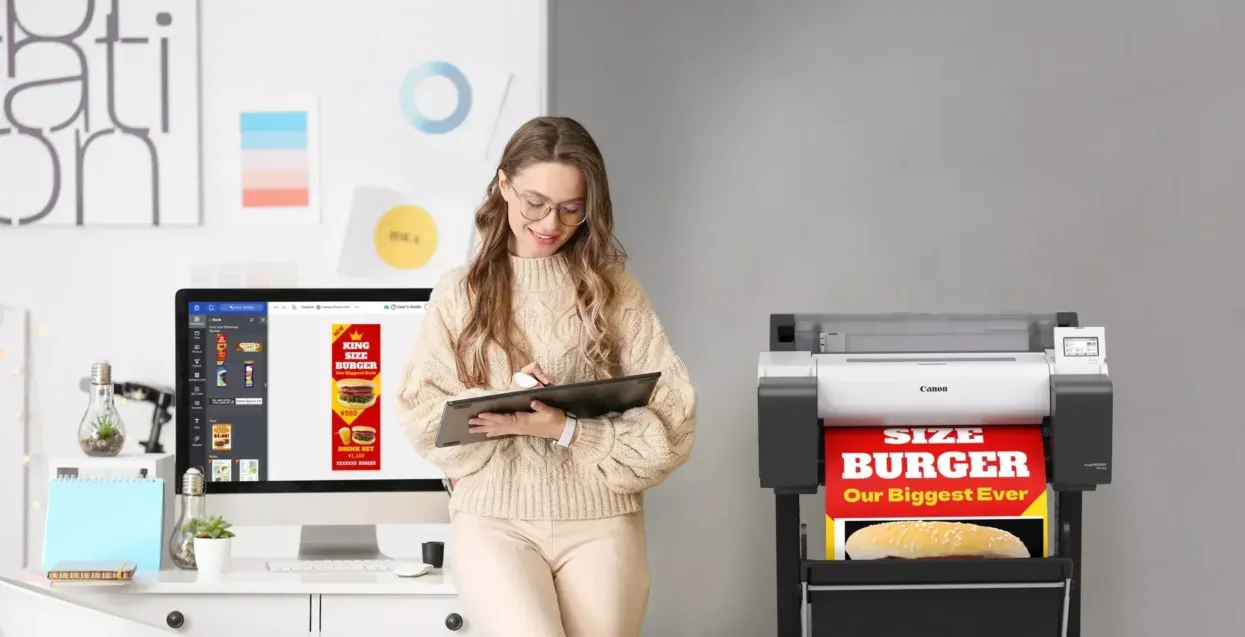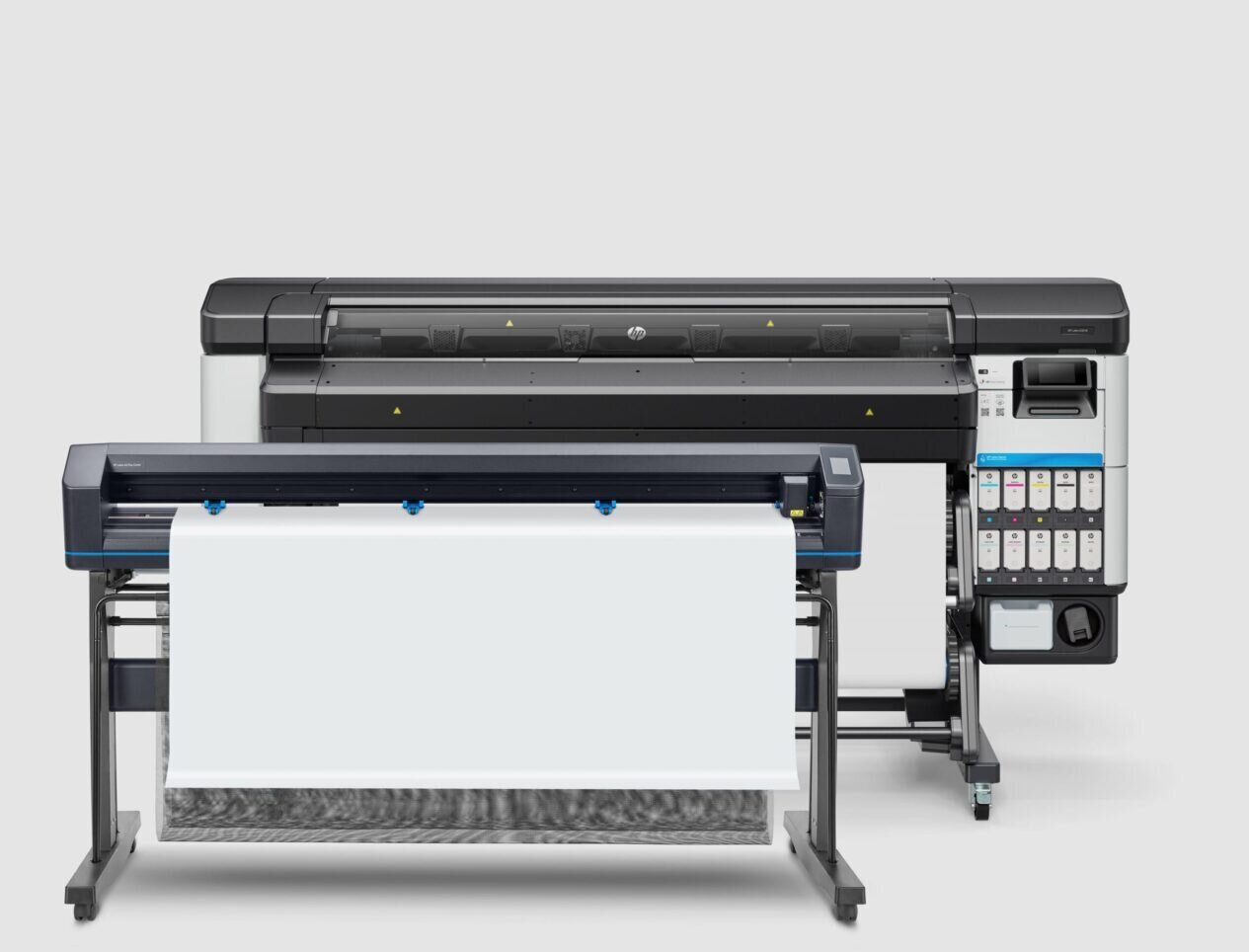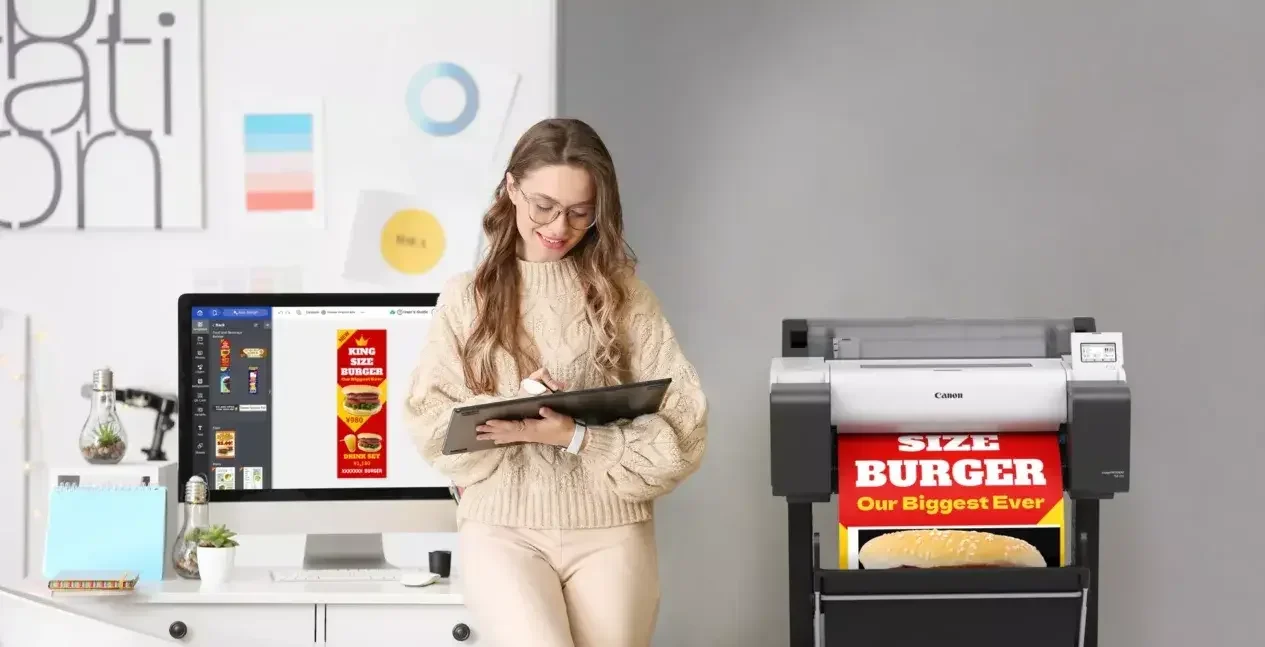
With sustainability at the top of the list for many customers when it comes to printed work, Rob Fletcher takes a look at some of the latest developments in digital wide-format print and analyses how these advancements can help print companies address demands.
If there is one trend that has grown perhaps more than any other in the global print industry in recent years, it is sustainability. Customers are now demanding their printed work is more planet friendly than ever before, seeking out those print service providers (PSPs) that can step up to the plate and deliver print in line with these requirements.
This is very true across all areas of print, including the busy digital wide-format sector, where work such as posters, banners and display graphics now face much more scrutiny when it comes to the impact of each application on the planet.
The good news for PSPs is that manufacturers and suppliers are responding, and responding well. Many of the major manufacturers have launched machines that can deliver sustainable work, with new solutions coming to market all the time in terms of hardware, consumables and materials.
FESPA.com picks out some of the latest advancements in this area…
HP launched its new HP Latex 630 and HP Latex 630W printers in September 2023

Winning with water-based ink
Up first is HP, which towards the end of last year announced the launch of the latest model in its HP Latex range in the form of the HP Latex 630 printer. The entry-level machine was handed its global debut in mid-September and has since been made available to PSPs around the world.
The stand-out sustainable feature of the HP Latex 630, and indeed all HP Latex printers, is their use of water-based HP Latex inks. These inks are regarded as being much kinder to the environment than their solvent, eco-solvent and UV counterparts as they give off far less chemicals and odours in comparison.
The HP Latex 630 also carries UL ECOLOGO and EPEAT (Electronic Product Environmental Assessment Tool) environmental certifications, uses carton-based cartridges that reduce plastic by using 100% recycled and recyclable cardboard containers, as well as recycled plastics from HP’s closed-loop process, including post-consumer beverage bottles.
Alongside these sustainable benefits, the HP Latex 630W version of the printer also has a white ink feature, which HP said allows users to produce a more impactful range of signage and décor jobs.
“The new HP Latex 630-series packs our leading latex features, such as white ink, into a more compact and affordable form factor – allowing even the smallest of print businesses to effortlessly deliver high impact signage and décor applications, boosting margins,” said Daniel Martinez, general manager for HP Large-Format.
“Beyond the hardware, we have continued to innovate when it comes to services and solutions, with new cloud-based HP Print OS functionalities giving time-pressed users the ability to process and monitor jobs from virtually anywhere.”
The HP Latex 630 and HP Latex 630W have a top speed of 14sq m/hr in standard six-pass mode and can handle media up to 64 inches wide and rolls as heavy as 42kg.
The TM-255 is one of five models in the new Canon imagePROGRAF TM series of A0+ and A1+ printers

Shooting for sustainable success
Elsewhere and Canon has also introduced a new printer model to the mark in the Canon imagePROGRAF TM series of A0+ and A1+ printers. The range comprises five models: the TM-355, TM-350 and TM-340 for A0+ prints and the TM-255 and TM-240 for A1+ output – all featuring a newly formulated, magenta ink.
Each model in the series has been designed for producers of technical and promotional large-format printing applications across sectors including architecture, engineering, construction, manufacturing, retail, hospitality and education.
In terms of sustainability, Canon confirmed that the entire imagePROGRAF TM series has achieved a ‘Gold’ product rating under the US EPEAT Registry. This, Canon said, is the highest level of registration in the field of imaging equipment products. As a further environmental, incentive, expanded polystyrene foam has been eliminated from the products’ packing materials in favour of full cardboard packaging.
Other features include a newly developed L-COA PRO II image processing engine, which Canon said enables quick start-up. The TM-355/350 offers top printing speeds of up to 3.2 pages per minute, around 28% faster than previous models.
In addition, each printer runs with all-colour pigment, water resistant ink, which Canon said allows the printers to produce posters and point-of-sale items that attract attention and do not fade easily over time.
“Setting a new bar for compact multi-use large format printers, the new imagePROGRAF TM series creates incredibly vibrant prints, with a small footprint and less noise,” Duncan Smith, country director for production at Canon UK & Ireland, said.
“Whatever your company size, however restricted your space, you can now conveniently produce a wide variety of print applications which would traditionally have to be outsourced, from CAD drawings to posters and retail POS materials, improving productivity and efficiency without compromising quality.”
Xanita aspect from Antalis is a paper-based board designed for wide-format printers

Material matters
A round-up of new developments would not be complete without a nod to the materials used in this sector. After all, choice of media plays a major role in the overall sustainability of printed work.
Antalis has announced several new green-minded products in recent months, offering users more sustainable options with their print, including many suitable for work within the wide-format segment.
The first product range that comes to mind is Color Copy Original, with this having been expanded with the addition of new extra-long banner formats. The collection includes extra-long banner formats such as 660 x 330mm, 889 x 330mm, and 1,200 x 330mm, in short grain options, while grammages span across 120g/m2, 160g/m2, 250g/m2 and 300g/m2.
“The XL banner formats open up new possibilities for landscape brochures, six panel brochures, gatefold cards, banners and more creative and impactful digital print,” Antalis said.
In terms of a sustainable angle, the Color Copy XL banner papers, like all other products in the wider range are European Ecolabel and FSC certified. In addition, Color Copy is CO2 neutral and has received the Cradle-to-Cradle Product Certification at Bronze level.
Also new from Antalis is Xanita aspect, a paper-based board designed for the wide-format print industry. According to Antalis, Xanita aspect sets a new standard for environmentally friendly signage solutions, offering an alternative to conventional honeycomb boards.
Xanita aspect is supplied in two types; aspect Print, with a white liner made from over 90% post-consumer paper and aspect Kraft, with a brown liner made from 100% post-consumer paper. The product does not contain any harmful chemicals or VOCs, while it has also been awarded a maximum rating of five stars on the Antalis Green Star System.
“We believe that sustainability and performance should go hand in hand,” said Paul Neale, product manager at Antalis. “With Xanita aspect, we have a product that not only meets the demands of the printing industry but also aligns with our customers’ commitment to ESG goals.”
To put it simply, if you are a wide-format print business seeking to improve sustainability, then there are plenty ways to do so. Switching machinery or working with more planet friendly materials will help shine a greener light on your company and the work you produce.